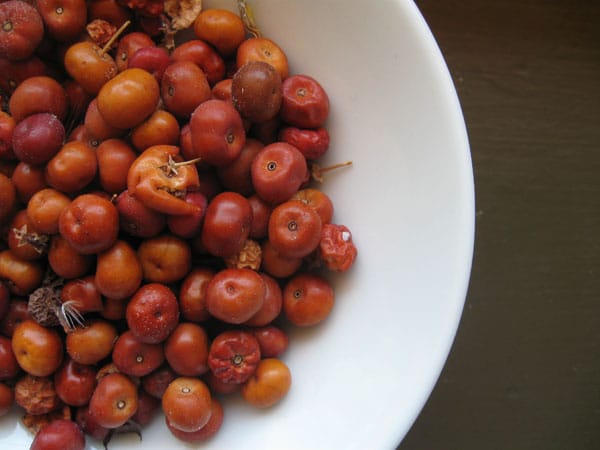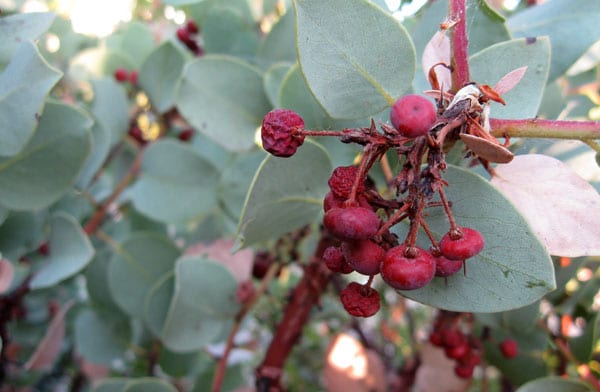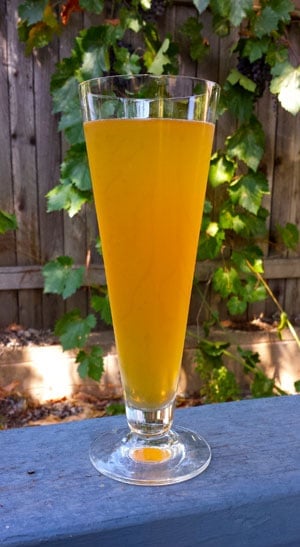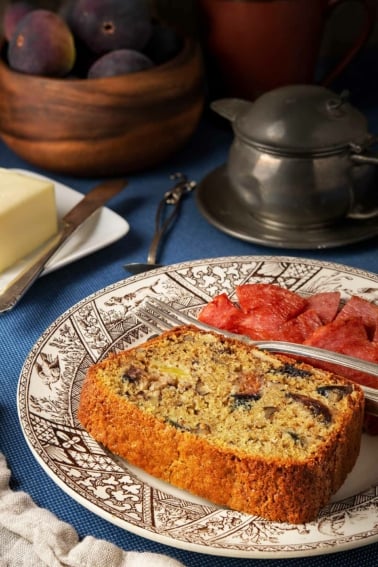As an Amazon Associate I earn from qualifying purchases.

Manzanita is everywhere here in the Sierra Nevada. It is a ubiquitous shrub that can grow into a small tree, with unmistakable, gnarled branches ranging from a gaudy crimson to a muted pumpkin. Those of us in NorCal know and love this plant well. Few realize that manzanita berries are edible — and if you know what to do with them, delicious.
Some form of manzanita lives in most Western states, from British Columbia to Arizona, out to New Mexico, Nevada and Utah. There are more than 100 species of arctostaphylos, some of which, like the Presidio manzanita, which lives only in San Francisco’s Presidio, that are impossibly rare.
Manzanita leaves, which are smooth ovals, are thick, leathery and a pale gray-green, often with an even paler green underside. The shrubs are evergreen, although they will drop lots of leaves during a drought.
The plant’s flowers display its kinship with blueberries and huckleberries – they are white or pale pink urns, held in clusters of between five and 20 flowers. In California’s Central Valley, they flower as early as January, with berries coming ripe by June. Flowering comes later on the Pacific Coast and in the mountains, however.
You can eat the berries of any manzanita. Outside California, you will most likely find pinemat manzanita, A. nevadensis, A. pungens (which extends into far west Texas), greenleaf manzanita, A. patula, and hairy manzanita, A. columbiana. All are shrubs except for pinemat manzanita, which is a groundcover.
Manzanita like to live in dry, scrubby places, but there’s pretty much a species for every habitat in California. Once you learn what they look like, you will see them everywhere in the Golden State, even in parking lots. In general, however, look for manzanita in coastal scrublands, foothill chaparral, and in open, dry forests.
So, how do you eat it? You can pick the flowers, unripe berries or ripe berries.
Flowers make a lovely garnish, but you need to catch them just right: Young flowers are sweet and full of nectar, but they rapidly become tannic and bitter. The only way to tell is to taste them.
Unripe berries make a fantastic cider. Manzanita, as the Spanish speakers out there have already figured out, means “little apple” in Spanish. Green berries look a lot like tiny Granny Smith apples, and they have the same tartness. Pick them when they are still green, but have a blush of red on them. Really unripe berries are too tannic and tart to work with. You need them about halfway along. Here is my recipe for green manzanita cider.
Green berries make something very much like a dry, hard apple cider, only without the alcohol. I like this cider with a little honey on a hot day; you need to make it ahead of time by heating it gently to melt the honey. Or you can just drink it with sugar or all by itself.

Ripe berries range from burnt umber to a deep red, and are ready anywhere from June to October depending on species and environment.
Harvesting manzanita berries is simply a matter of pulling them off the plant, but you’ll find out that many species are sticky, especially the well-named A. viscida. This means that as you harvest, you’ll pick up bits of leaf and stem that need to be winnowed out. Do this, because the twigs and leaves of manzanita are extremely tannic and will ruin your cider or your manzanita sugar, which we’ll get to in a minute.

Prepping
Flowers need to be kept in a container in the fridge and used within a day or two. Unripe berries should also be kept in the fridge. They’ll hold there for a month or maybe two, but shrivel after that. You can freeze green berries, and they will keep for a year that way. Fully ripe berries are dry, so you can keep them in the pantry. They last at more than a year, although they lose sweetness over time.
Ripe berries you make into one of two things: Cider or sugar. You will need to separate the fruit from the seeds. This is easier that it might seem, because the seeds are very, very hard. All you need to do is put the ripe fruit into a spice grinder and buzz it for about 30 seconds to pulverize the soft, dry fruit and not the seeds. Then sift the ground fruit from the seeds.
You can use the ground fruit as a flour or a sugar substitute: It’s halfway between each. Manzanita “sugar” is nicely sweet and apple-like, but not so sweet you’d want to put it in your coffee.
Don’t toss the seeds. I learned this trick from fellow forager Christopher Nyerges: Boil the seeds and stray bits of fruit with water to make a sophisticated drink. Bring seeds and water to a boil, cook for 20 minutes, then let them steep until everything returns to room temperature. Then store in the fridge. If you do a ratio of 1:1 of water and seeds, you will have something like a vinegar.
If you do a 4:1 ratio of water to seeds, it will look exactly like regular apple cider, and taste similar, only with a decided tannic edge. It is a perfect starting point to make a hard manzanita cider, which we’ll get to in a moment.
You can also make a cider with the ripe manzanita berries. I like a ratio of about 1/4 cup pulverized berries to each quart of water. Boil, let it cool to room temperature and let it steep overnight. This ripe manzanita berry cider is pleasant but mild – a little like Gatorade – and needs no additional sugar.
Once made, you can make syrup out of this cider and from there make ice cream or sorbet, or use it as a concentrate for a cooling drink or a manzanita martini. Go 1:1 in volume with sugar and cider.

You can dilute this syrup to about 22 brix (specific gravity of 1.092) and ferment it into wine. Once you have your wine, use it as a base to mix with seltzer water and you have a damn good hard manzanita cider. This is what I do with most of my unripe berries.
The ripe manzanita berries really shine in baked goods. Think muffins, cookies, dessert and breakfast breads. If you’re into powders on your foods, manzanita sugar is a fun thing to sprinkle over ice cream or on a composed dessert. Mostly I make these manzanita shortbread cookies, which are pretty excellent, if I do say so myself.




Thank you for the article. Could you look more into this and put a disclaimer about the seeds if necessary? :
I read an article that the seeds can contain cyanide if they’re crushed. So putting them in a blender to make the cider might not be a good idea. A mortar and pestle is a safer alternative. The seeds are so hard, so it’s probably less likely they can crack, but I think a cautionary note is a good idea!
I made the cider and it was delicious. The blender made it so easy to separate, but it worried me later to read the seeds can be poisonous if crushed. I will use a mortar and pestle next time.
Laura: They are perfectly safe. There is that slight amount of a compound that is a precursor to cyanide – not actual cyanide – in a great many seeds of a great many fruits we all eat every day.
Thanks for the info and recipes. Earlier today I found an exquisite manzanita root ball and trunk on the beach. The pacific had polished and rounded the edges of wood to a velvety finish. From a beach to the Internet and on into the future’s June, when I will forage for manzanita berries… Happy New Year!
I just read that Manzanita seeds have cyanide which like apple seeds are toxic in large quantities. Hope you get this message in time.
Love the sweet tart taste of these high desert Manznita on the CA Central Coast, Santa Cruz Mountains. Hadd eaten Madrone berries but they are not near as yummy! Thanks for the recipes!